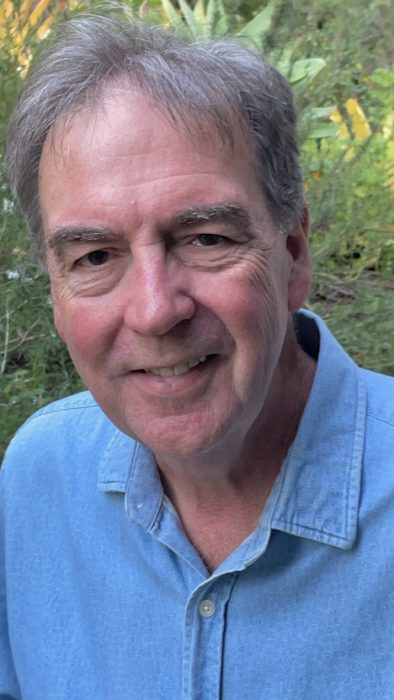Comment from Brad Smart
I reckon it’s about time that community radio took off those self-limiting blinkers and saw its potential in a new, more positive light.
After spending the past six months consulting to some community stations on programming and strategy, it’s become evident to me that a real window of opportunity is opening for the sector, particularly in regional areas.
Many community operators are about to find themselves ideally positioned to move in and fill a void that’s been inadvertently created by commercial broadcasters.
That hole has been generated because major commercial networks are currently rolling the dice on high-priced metro-based talent betting they’ll far out rate locally-produced programs. The networks’ regional outlets are now finding themselves relegated to little more than relay stations.
Sure, this networking been happening for quite a while, but local communities are really starting to notice. As this opening gets wider it’s begging entrepreneurial community operators to seize the day and become the go-to ‘local’ station in their regional markets.
But, it’s not a given. This power-shift is only going to succeed if those community stations do it just right. ‘Doing it right’ means finding a way to attract a large enough audience that appreciates the value of local radio. If they do, the changes those community stations have to make will really pay off.
With a growing audience, it won’t be hard to convince more local businesses to become sponsors of your station. Enough of them could make your station independently viable. Your sponsors will begin to see a positive return on their advertising dollars. It’s all a numbers game.
Repeat business is the key to all commercial and community radio sales and you don’t get those repeat dollars unless your clients are getting results. To build an audience means community stations need to offer programs with targeted appeal. They need to be properly formatted so they begin to attract listeners in their local area. It’s a balancing act.
It’s been 50 years since community radio started in this country. I’m sure it started out with lofty ideals of giving a voice to the ‘common people,’ but the reality is that over time the appeal of that 1980’s idealism has waned and other platforms have been used for local news and information
Many community stations that started out with a flurry of enthusiasm now struggle to fill their airtime with volunteers, or even pay the power bill. If your station doesn’t have a problem, then you’re very lucky.
Community radio stations that don’t attract a substantial audience are a drain on any federal, state and local government grants they receive, or other handouts that they rely on to survive. If they have local sponsors and a very small audience, then those sponsors are not getting value for money.
I know of one community station that offers disparate programming and they’re proud of it. It plays classical music at 9am, comedy tracks at 10, Top 40 tracks at 11 and broadcasts poetry or Blues at midday. Sure, I’m exaggerating a little here, but you get my point. Its programs are all over the place.
Who listens to this type of programming? Well, maybe the relatives and friends of the presenters, and even then, I’m sure it’ll be under sufferance. True believers in community radio may even say this is the ultimate way for a community station to operate. But is it really? In 2024?
In Maroochydore, on Queensland’s Sunshine Coast, Sunshine FM is the face of modern community radio. Even from its early days, it recognised that it was in competition with four professionally programmed FM commercial stations, all of them chasing that highly desirable Under-54 market.
Even from its early days, the people at Sunshine FM were smart enough to realise that 30-percent of the people on the Sunshine Coast were retirees. Many of them self-funded, driving Mercedes and sailing their boats. They were reasonably well off, but their music tastes weren’t being catered for.
So, Sunshine FM formatted a slick Classic Hits format, which they’ve been running for over 15 years. Today, the station poses a serious threat to the commercial operators, having captured a large share of the coastal market and its radio revenue.
Reflecting Sunshine FM’s success are new modern digital studios overlooking Maroochydore and a very healthy bank balance. They aren’t beholden to handouts or grants for their daily operations. Advertisers (yes, sponsors for community radio) are banging on their doors.
Sunshine FM isn’t the only community broadcaster that operates successfully. Curtain FM in Perth, 2NUR Newcastle, 2SER and Hope 103.2 Sydney and 89.9 The Light in Melbourne are amongst many that have had similar success by realising they can target a specific market sector and do very well.
So, how have these stations become so successful? It’s largely because they all run to a format that meets the needs of the market they’re targeting. A specific and consistent music format is important because it brings together an audience with like interests.
As a modern community station operator, you should no longer be programming ‘a bit of this’ and ‘a bit of that’ claiming to be “programming for everyone” in your audience. Fifty years of radio research has shown that ‘programming for everybody’ is really ‘programming for no one.’
How does the adage go? “You can’t please all the people all the time.” Very true. So, how do you go about working out what your station’s new sound should be?
It all starts with good research. You need to find out where your station currently ranks in listenership and what formats are already well taken care of by other stations in your market.
For example, if you work out there’s no one playing rap in your area and you start a rap format, you’ll gather a young audience of rap listeners. However, that rap niche in your service area may be only a tenth as large as those wanting to listen to Classic Hits of the 70s and 80s, or even Country Rock.
That why it’s importance to drill down on any potential niche to see if it genuinely presents the best opportunity for your station. In assessing your market, you don’t need to undertake highly detailed research, just enough to be able to reliably determine:
- Where your station currently sits in the market against all competitors
- What formats are already active in the market
- What type of music your current listeners prefer
That last category is quite important. It can give you a hint to the type of format you may seriously consider. If you’re not a community station with very deep pockets, the format you choose to adopt will be very important.
You can’t really go up against an established competitor with an identical format and try to gouge audience away from them. That almost always proves to be a wildly expensive exercise and is rarely successful without you being able to do it better and having a huge promotional budget.
This sort of predatory attack is known as a Red Ocean scenario – it leaves plenty of blood in the water, and if you’re not the biggest fish, a lot of that blood may be your’s. You certainly don’t want that.
Smart community operators look for a niche that nobody else is currently using.
If you choose the right niche, you could even get a few months without anyone else in the market attacking you. Having a moment of peace at least gives you an opportunity to build up your audience.
This is a Blue Ocean scenario – it’s the clear water that you’re looking for and offers you some smooth sailing. Even before you start your research, you should be aware that there are certain things you can count on in almost every market.
In most regional areas, aside from their network content, the commercial FM station will generally be playing an adult rock format, the AM station – talk and Gold or Classic Hits. ABC compliments that with regional talk, and sometimes, Newsradio, Classic FM and Triple J.
However, you shouldn’t forget your most powerful weapon. Community stations always have ‘localism’ to wave as a flag. You’re on the ground in the market. That’s a great advantage – don’t blow it.
Once you’ve settled on the music niche you believe will maximise your chances of winning over listeners, you’ll need to thoroughly research the tracks you’re going to schedule. That’s a big job. You’ll need to take any format change at your station very seriously and maintain discipline over the music that’s ingested into your playout system. Formats can be corrupted very easily.
To round off your format change, you’ll need proper imaging. Imaging intuitively tells your audience what your station stands for and helps to reinforce the positioning of your station. Professional imaging is no longer hugely expensive, at least in its simple form, and can make the difference between whether your station cuts through or gets swamped in the market.
The days of community stations being thought of as ‘cute’ because of their amateurism are fading. It’s time now for community radio to find its new home on the broadcasting spectrum. As many commercial stations move away from being the parish pump broadcaster, it may be time for once-cocooned community stations to turn into butterflies.
I can see a silver lining in this transition. It may well open up opportunities for community stations to move in and occupy that local space that was once exclusively the domain of the heritage AM.
However, community stations will only be able to do this if they offer a consistent and appealing format that draws listeners across to them as ‘the new local station.’ To me, it’s becoming clear that the future for community radio may prove to be vastly different from its lowly role of the past.
All it needs now is people of vision to take it there.
 Brad Smart previously owned and operated the Smart Radio Network through regional Queensland.
Brad Smart previously owned and operated the Smart Radio Network through regional Queensland.
He sold his stations to the then Macquarie Radio Network.
He has been a journalist, broadcaster and film producer for over 30 years.
Brad is available as a freelance writer, voiceover talent and consultant.
Brad’s articles and podcasts are also available through his website www.bradsmart.com.au
See Brad’s previous articles here.

